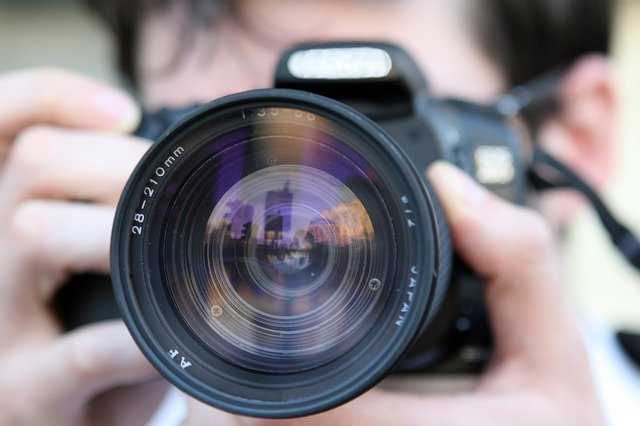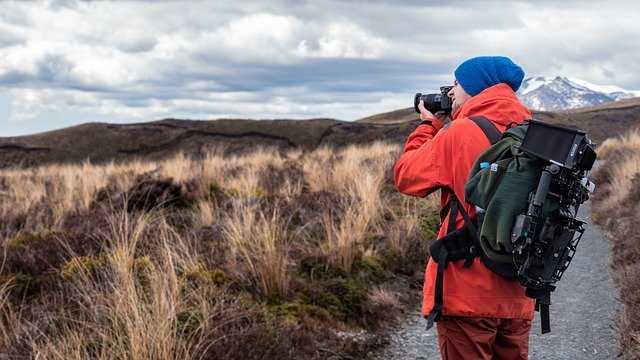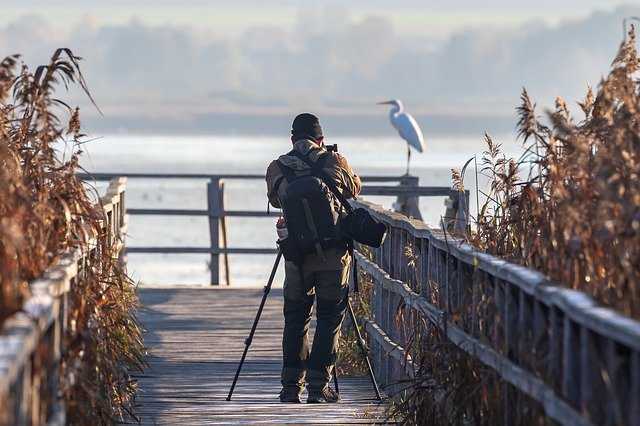Tips To Become A Professional Photographer

Cinematographers, videographers, and camera operators are all terms used to describe photographers who capture moving images rather than static ones.
The term "professional" can also suggest preparation, such as academic study or apprenticeship on the part of the photographer in order to improve their photographic talents.
5 Top Techniques for Professional Photographers
The following techniques will help you to create better photos.
#1. Don’t Overexpose Highlights
It's crucial to prevent blowing out the highlights in your photographs when setting your camera's exposure compensation.
What's the cause for this? When working with white regions of a photograph, it's nearly impossible to recover any fine detail
It's not difficult to maintain the vibrancy of your highlights. The shutter speed, aperture, and ISO are put into play at this point. They're the only two options for adjusting a photo's brightness with the consideration of the flash settings.
Even exposure compensation, which is a critical adjustment, informs your camera to alter one of these three factors.

#2. Learn Which Settings Matter
There are numerous camera settings, and mastering them, especially as a novice, takes time and effort. However, learning how to properly set your camera and which camera settings are the most important is well worth your time if you want to take the best possible photos.
Although it can be confusing at first, we hope our articles on aperture, shutter speed, and ISO will give you a good head start. In photography, there are only three settings that matter: exposure, focus, and white balance.
In addition to aperture, shutter speed, and ISO, practice with the various autofocus modes to understand how to focus correctly.
Single-servo Autofocus (also known as One-Shot AF) is best for still subjects, while continuous-servo autofocus (also known as AI Servo) is best for action. Manual focusing should only be used if autofocus fails because it is too dark.
#3. Take Your Time
If you're not careful, it's easy to make mistakes with photography. The greatest approach to avoid this is to go slowly and patiently whenever you can, especially when you're just learning photography.
To begin with, make sure all of your camera settings are correct. Shooting portraits outside in the sunshine on a beautiful day, but utilizing yesterday night's settings for Milky Way photography, something is horribly wrong.
Take your time and don't rush. Once you've made your first big decision, stick with it. Is your composition as strong as it can be? Did your camera's focusing point land on the correct area?
Has everything you can think of been done to make the lighting better?

#4. Pay Close Attention to the Light
Light is probably the most crucial aspect of photography. When you capture a photo in good lighting, you've already made significant progress toward capturing an excellent image.
But what really constitutes good lighting? It's not all about the sunsets. In many cases, the goal is to strike a balance between the brightness of the light coming from the subject and the darkness coming from the background.
It doesn't matter how beautiful the sunset is; a dark and silhouetted foreground might destroy the shot.
The simplest solution is to focus on the direction and softness of the light. If the light is excessively strong, unpleasant shadows may appear over your subject.
Consider moving the light source or the subject if the light is coming from an unfavorable angle (in a studio or outdoors). Alternatively, you might wait until the light is more flattering (landscape photography).

#5. Move Your Feet
Sometimes, the only method to easily alter the relative sizes and positions of the things in your photo is to move around. You don't like how huge your subject is, but the scenery in the background is too small? Take a step back and magnify.
Want to make a distracting rock look better? Move it around until it's no longer a distraction or is no longer a significant part of your composition.
Important Tips on Digital Photography Techniques
#1. Smoke Art Photography
When it comes to smoke art photography, it can be a difficult but rewarding process to learn and master. Fireworks leave behind mesmerizing smoke trails that make for excellent photography.
#2. Panoramic Photography
A technique called "panorama stitching" can be used to take panoramic photos even if you don't have a high-end camera.
Using a tripod, taking a succession of side-by-side photos, and then blending them together is how this technique is used.
#3. Black and White Photography
When done well, black-and-white photography can evoke strong feelings or add dramatic tension to a shot. Even if you're a digital photographer, you should know that black and white photography isn't only about using the black and white filter in Photoshop.
When shooting in black and white, it's important to focus on the composition first, utilizing shadows, lighting, and compelling subjects to create striking images.
#4. Reflection and Mirror Photography
Reflections can give a picture a tremendous impression of depth. Reflections aren't just for pictures taken over water; they may be used in a wide range of situations.
Use a tiny aperture, such as f/11 or greater, to assist balance out the subjects in the picture and enhance the reflected effect.
#5. High-Speed Photography
High-speed photography is fascinating because it captures moments in time that are too quick to be seen with the human eye.
For high-speed photography, a tripod, a small aperture, a flash, and a lot of perseverance are all necessary tools.
#6. Zoom Blur Effect
The zoom blur effect is a quick and easy way to give your photos a unique, "fractured-blur" look. Set a slow shutter speed and move the camera zoom in or out while releasing the shutter to get the zoom blur effect.
Author Bio
Contributor comprises full-time and freelance writers that form an integral part of the Editorial team of Hubslides working on different stages of content writing and publishing with overall goals of enriching the readers' knowledge through research and publishing of quality content.
Article Comments
No Comments!
At present there are zero comments on this article.
Why not be the first to make a comment?
Similar Articles
Sponsor
Search Articles
Experts Column
Latest Articles
Featured Articles
Most Popular Articles












